Part 2: Finding Inspiration from Early America (Designing my House Series)
Visit my NEW site Alexandra Eidenschenk Designs

If you haven’t read it already, please check out “Part 1: Buying Land,” the first in my series of blogs about designing my “new old house.”
With my new house’s site planning pretty well established, the real first step in the design process was to determine what I really wanted in a house. For me, this was a relatively simple question to answer because it’s my profession and my passion. My mom was a talented interior designer and I grew up surrounded by design books and magazines, not to mention the beautiful homes of our friends and neighbors in Ridgewood, NJ.
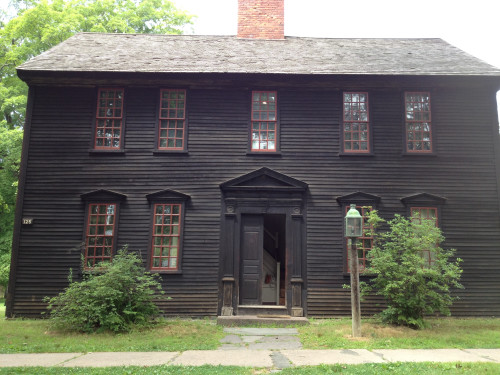
My own space planning and design ambition came early. My twin sister and I spent hours building Lego houses and towns out of crayons and Matchbox cars. And I remember begging my 4th grade teacher to let me re-arrange the classroom to make it more functional by stacking cubbies to form a pseudo mudroom and clustering the desks in groups of four. I’m sure Mrs. Rhymer wouldn’t be at all surprised by my choice of profession today!
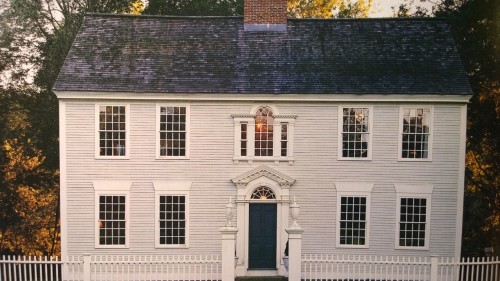 As much as I appreciate great contemporary architecture, I knew I wanted a house that would feel organic in New England where I live – hence the “new old house” concept. Having lived and traveled extensively in New England, it’s always the Georgian houses, named after England’s King George I and built in America in the 18th century, that make my heart sing. Why is it that when people walk into an early American house they feel good? This is not often how we feel in new construction. There is something about the simplicity of the design and construction – often few rooms around a central chimney – that make us feel instantly like we’ve come home. The houses are not too big or too small and the low ceilings give a sense of intimacy. Most early American settlers could not afford fancy woodwork and decoration so any that was added over the years was lovingly and thoughtfully crafted by hand.
As much as I appreciate great contemporary architecture, I knew I wanted a house that would feel organic in New England where I live – hence the “new old house” concept. Having lived and traveled extensively in New England, it’s always the Georgian houses, named after England’s King George I and built in America in the 18th century, that make my heart sing. Why is it that when people walk into an early American house they feel good? This is not often how we feel in new construction. There is something about the simplicity of the design and construction – often few rooms around a central chimney – that make us feel instantly like we’ve come home. The houses are not too big or too small and the low ceilings give a sense of intimacy. Most early American settlers could not afford fancy woodwork and decoration so any that was added over the years was lovingly and thoughtfully crafted by hand.
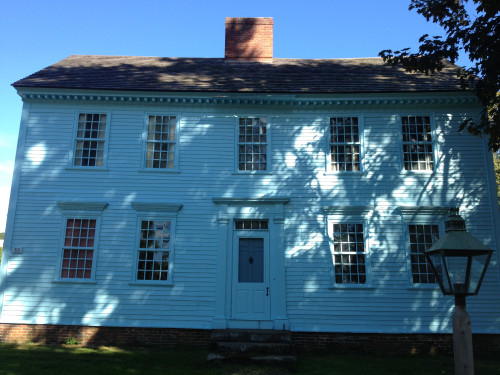
Georgian architecture is based on classical rules of design brought first to England by English architect Inigo Jones (1573-1652) who traveled extensively in Italy and studied the great Italian architect, Andrea Palladio (1508-1580). Early English settlers in America brought their building skills and knowledge from their homeland and since most people didn’t have much money to customize their first homes, many structures were based off pattern books. For you architecture buffs, the Georgian period can actually be broken down into three distinct periods – early (first half of the 18th century), middle (1750-1780) and late (after 1780 into the early 19th century). 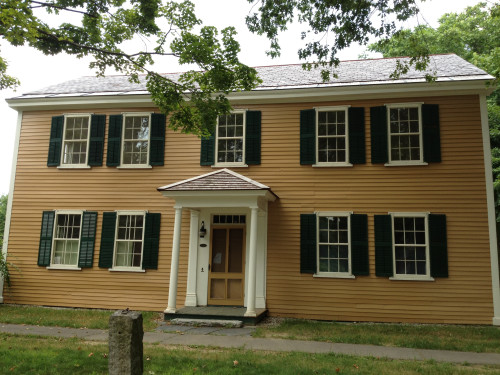 Symmetry, particularly on the front façade of a building, was paramount. In the early years of the Georgian American period, Georgian houses were simple rectangles with minimal ornamentation and muted colors. Later these rectangles were expanded with telescoping attachments and more grandiose trim work (inside and out) with more colorful exteriors. If you’ve ever traveled to Italy, you can see that Georgian houses are clearly evocative of Italian Renaissance palaces.
Symmetry, particularly on the front façade of a building, was paramount. In the early years of the Georgian American period, Georgian houses were simple rectangles with minimal ornamentation and muted colors. Later these rectangles were expanded with telescoping attachments and more grandiose trim work (inside and out) with more colorful exteriors. If you’ve ever traveled to Italy, you can see that Georgian houses are clearly evocative of Italian Renaissance palaces.
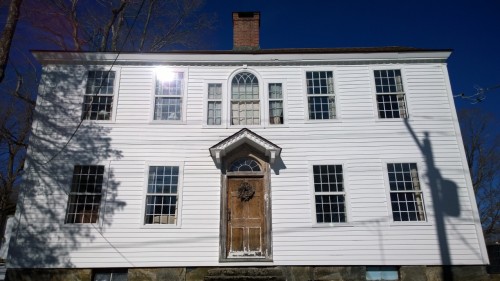
Although details vary by geography and construction date, basic identifying features of Georgian homes include five bays (two windows on each side of an entry door) and two stories, a paneled front door, usually centered on the house with a decorative entablature (e.g., transom or side lights, columns/pilasters and moldings), a low pitched roof (hip, gable or sometimes gambrel), and double-hung windows with many small panes. 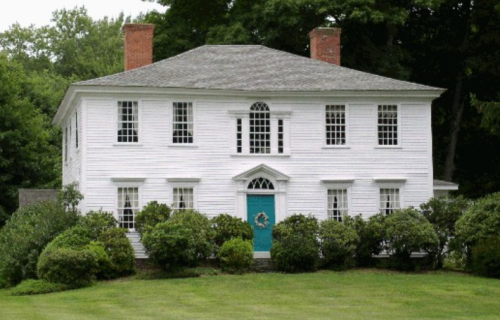 Depending on the homeowner’s budget, the house was either two rooms over two rooms flanked by a center hall, or four rooms over four rooms. A central chimney or multiple chimneys, made of brick or stone, allowed every room to have fireplaces and to trap the heat inside the house; in the south’s cooler climate, chimneys were placed on outside walls where heat efficiency wasn’t as essential. Palladian windows, generally located in a stair case or second floor landing, were incorporated after 1750.
Depending on the homeowner’s budget, the house was either two rooms over two rooms flanked by a center hall, or four rooms over four rooms. A central chimney or multiple chimneys, made of brick or stone, allowed every room to have fireplaces and to trap the heat inside the house; in the south’s cooler climate, chimneys were placed on outside walls where heat efficiency wasn’t as essential. Palladian windows, generally located in a stair case or second floor landing, were incorporated after 1750.
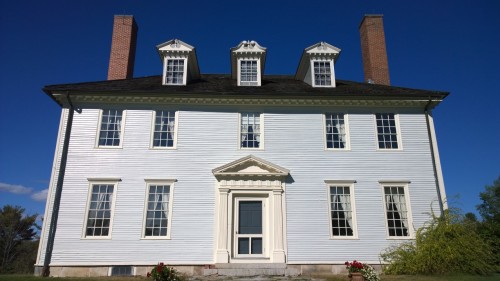
For the past 20 years, I have been in love with Hamilton House in South Berwick, Maine and it is a major inspiration in my new house design. I first saw this house in a beautiful book called “American Colonial: Puritan Simplicity to Georgian Grace” which my twin sister, Cybele, gave to me for Christmas in 1995. She actually took the trouble to have it signed by the author, Wendell Garrett, one of the foremost experts in American furniture and decorative arts at Sotheby’s and someone I admired greatly. This past summer, my sister and I made a pilgrimage to Maine to see it in person and it didn’t disappoint. It’s truly one of the most majestic examples of Georgian architecture in New England – elegantly proportioned, perfectly situated on the property and the height of simplicity and elegance. If my house could be half as beautiful as this, I would be happy.
The pictures you have seen here are fine examples of early Georgian architecture which are more modest and unadorned than middle, late and Federal styles and which inspired my own house design. My next blog will take you through the design process and will include 3D color renderings and elevations. I hope you stick with me.

There is a wonderful example of a Georgian style home in Chapel Hill, NC. It is a near identical match to the 2nd photo in the gallery of photos above, the exception being that it lacks the picket fence as pictured above. I have always felt the addition of a fence would not only enhance but fulfill the overall composition of the grounds and the structure. Thank you 🙏🏾
Emanuel – My apologies that it took a year for me to post your comment! It never appeared in my inbox. Anyway, thanks for reading my blog. Your house sounds beautiful!